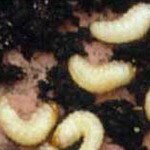Crocus care tips for June
 June is one of the best gardening months, simply because of the sight and the scent of roses. Their flower power will blow you away, so it’s not surprising that rose diseases often go unnoticed and untreated until the flowering has peaked and the foliage is really looking sick. If you try not to use chemicals in your garden then you’ll have to take other steps to combat these problems to avoid disfigured and weakened plants. The first and most important step is to choose disease-resistant varieties. Roses vary greatly in the susceptibility to disease, so bear this in mind when making your selection. Even so, the so-called disease-resistant varieties aren’t always able to shrug off attacks by all three common rose diseases. 'Charles de Mills', ‘Margaret Merril’ and ‘Koenigin von Danemark’ as well as varieties of Rosa rugosa can usually be relied
June is one of the best gardening months, simply because of the sight and the scent of roses. Their flower power will blow you away, so it’s not surprising that rose diseases often go unnoticed and untreated until the flowering has peaked and the foliage is really looking sick. If you try not to use chemicals in your garden then you’ll have to take other steps to combat these problems to avoid disfigured and weakened plants. The first and most important step is to choose disease-resistant varieties. Roses vary greatly in the susceptibility to disease, so bear this in mind when making your selection. Even so, the so-called disease-resistant varieties aren’t always able to shrug off attacks by all three common rose diseases. 'Charles de Mills', ‘Margaret Merril’ and ‘Koenigin von Danemark’ as well as varieties of Rosa rugosa can usually be relied  upon to remain healthy when others are looking a bit peaky. Like other plant diseases, the prevalence of rose blackspot, mildew and rust will vary from year to year, depending on weather conditions and the severity of the winter. If you haven’t fed your roses this year, do it now because vigorously growing roses are less likely to succumb to disease attack. Ideally, feed your roses twice; once in March or April and again during July using a specific rose fertiliser such as J. Arthur bowers rose food. It’s also worth maintaining a thick mulch over the soil surface to make sure the roses do not suffer stress due to lack of water. Fastidiously clearing fallen leaves during the autumn will help prevent any disease spores from overwintering, and hard pruning in early spring will remove diseased stems before the new growth starts. Mulching after pruning is also
upon to remain healthy when others are looking a bit peaky. Like other plant diseases, the prevalence of rose blackspot, mildew and rust will vary from year to year, depending on weather conditions and the severity of the winter. If you haven’t fed your roses this year, do it now because vigorously growing roses are less likely to succumb to disease attack. Ideally, feed your roses twice; once in March or April and again during July using a specific rose fertiliser such as J. Arthur bowers rose food. It’s also worth maintaining a thick mulch over the soil surface to make sure the roses do not suffer stress due to lack of water. Fastidiously clearing fallen leaves during the autumn will help prevent any disease spores from overwintering, and hard pruning in early spring will remove diseased stems before the new growth starts. Mulching after pruning is also  worthwhile because this will help prevent fungal spores that have overwintered in the soil from being splashed onto emerging foliage during heavy downpours in April and May.
worthwhile because this will help prevent fungal spores that have overwintered in the soil from being splashed onto emerging foliage during heavy downpours in April and May.
Rose diseases are very difficult to control once they are established, so prized rose bushes were traditionally protected by carrying out a spray programme. Healthy roses were sprayed every 10-14 days starting when the leaf buds began to open and continuing until September when the leaves fall. A more environmentally friendly option is to wait until the first signs of a disease are noticed, then remove all affected foliage and spray the remaining healthy leaves with a suitable fungicide.
Rose disease spotter

Blackspot
Purplish-black blotches appear on the leaves from May onwards, which then start to yellow and fall early. In severe cases the stems also become infected. Blackspot is worse in wet summers.

Rust
Orange-brown pustules develop on the undersides of leaves during the summer. These can often go unnoticed and the disease has taken quite a hold by the time the more obvious yellow pustules appear on the upper leaf surface. In severe cases, leaves fall prematurely. Most widespread in the south and coastal regions, but becoming more of a problem elsewhere.

Powdery mildew
White powdery mould appears on the new leaves in spring, spreading to stems and buds. Leaves eventually become distorted, may turn purple and fall early. Powdery mildew is worse after a dry spell or on roses growing in dry soil.
New roses for free
Few gardeners realise that roses are really easy to propagate from semi-ripe cuttings taken after flowering is over. First prepare a bed in a sheltered, lightly shaded spot. Dig out a narrow trench 25cm deep, cover the bottom with a shallow layer of sharp sand and fill with cuttings compost or a well-drained compost mixture. Select a healthy looking rose stem and trim below a leaf joint at the base and remove any faded flowers, so that the cutting is about 20-25cm long. Remove all but the top two leaves. Dip the prepared cutting in hormone rooting powder before inserting so that only the top two leaves remain proud of the surface. Water well, then cover with a cloche to keep the cuttings humid. Dig up and plant out rooted cuttings the following autumn. This is a system I use a lot. You won’t get 100% rooting as some varieties are trickier than others and rather too weak to produce their own roots, but vigorous varieties will do well. There’s the added bonus that you are getting new plants for free, and those that do succeed will never have suckers from the briar, like grafted plants, simply because there isn’t one!
Underground terrorists
 Unseen in their subterranean lairs, soil pests can wreck havoc all around the garden. Vine weevils are on many gardeners’ most wanted list, nibbling on roots as underground grubs, later turning their attention to the leaves as nocturnal adults. In many gardens they have spread from decimating permanent container plants to attack a wide range of border plants, from roses to the toughest of evergreen shrubs. Few plants seem to be immune. One of the reasons for this pest’s prevalence is that females reproduce parthogenetically, so that it only takes a single weevil to be introduced inadvertently into your garden for the destruction to begin. Although unsightly, the notches in the leaves do little serious harm to the plant…but the distinctive 8mm-long, creamy white grubs are the real villains, eating away roots and tubers before emerging as adults in the
Unseen in their subterranean lairs, soil pests can wreck havoc all around the garden. Vine weevils are on many gardeners’ most wanted list, nibbling on roots as underground grubs, later turning their attention to the leaves as nocturnal adults. In many gardens they have spread from decimating permanent container plants to attack a wide range of border plants, from roses to the toughest of evergreen shrubs. Few plants seem to be immune. One of the reasons for this pest’s prevalence is that females reproduce parthogenetically, so that it only takes a single weevil to be introduced inadvertently into your garden for the destruction to begin. Although unsightly, the notches in the leaves do little serious harm to the plant…but the distinctive 8mm-long, creamy white grubs are the real villains, eating away roots and tubers before emerging as adults in the  autumn. If you are very vigilant you might notice an affected plants’ slowing growth. This is often followed by wilting in warm weather and finally death, when there are too few roots left to sustain the plant. Fortunately, the adult vine weevils cannot fly and are relatively slow moving. This hampers their spread and means you have a better chance of catching them. Sadly, they are nocturnal, so you will have to go out at night with a torch to round them up. But these days there’s an effective biological control - Nemasys vine weevil killer. Containing nematodes, which are small soil worm-like creatures that lay their eggs in the vine weevil grubs, the biological control can be watered on in spring or late summer. If you hurry, there’s still time to do this now. Alternatively, consider applying Bug Clear Ultra Vine Weevil Killer or Bayer Provado Vine Weevil Killer 2, both of which can be used as a soil drench to control the grubs.
autumn. If you are very vigilant you might notice an affected plants’ slowing growth. This is often followed by wilting in warm weather and finally death, when there are too few roots left to sustain the plant. Fortunately, the adult vine weevils cannot fly and are relatively slow moving. This hampers their spread and means you have a better chance of catching them. Sadly, they are nocturnal, so you will have to go out at night with a torch to round them up. But these days there’s an effective biological control - Nemasys vine weevil killer. Containing nematodes, which are small soil worm-like creatures that lay their eggs in the vine weevil grubs, the biological control can be watered on in spring or late summer. If you hurry, there’s still time to do this now. Alternatively, consider applying Bug Clear Ultra Vine Weevil Killer or Bayer Provado Vine Weevil Killer 2, both of which can be used as a soil drench to control the grubs.
 In the vegetable garden there are a couple other soil pests worth preventing. Cabbage root flies lay their eggs at the base of new brassica plants, later hatching to feed on the roots. Simple felt collars placed around new plants at planting time are an effective preventative measure. Carrot fly is on the wing during late May or early June. Fortunately, the adults fly just above ground level, so you can prevent them reaching your crop by putting up a 75cm high barrier of insect-proof netting. Or cover rows with a tunnel of garden fleece which will also keep the pests at bay.
In the vegetable garden there are a couple other soil pests worth preventing. Cabbage root flies lay their eggs at the base of new brassica plants, later hatching to feed on the roots. Simple felt collars placed around new plants at planting time are an effective preventative measure. Carrot fly is on the wing during late May or early June. Fortunately, the adults fly just above ground level, so you can prevent them reaching your crop by putting up a 75cm high barrier of insect-proof netting. Or cover rows with a tunnel of garden fleece which will also keep the pests at bay.
But it’s not all doom and gloom. Take a few sensible precautions and you can keep pests well in check and spend more time smelling the roses!
Happy gardening!












